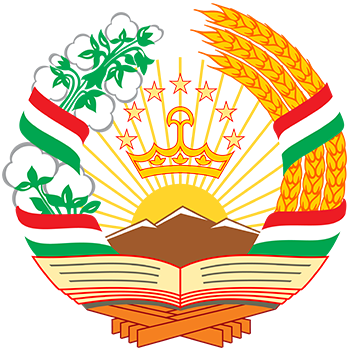Industrial Sector
The industrial sector of Tajikistan is considered one of the key sectors for the country's socio-economic development. For this reason, the Government of Tajikistan declared 2021–2026 as the Years of Accelerated Industrialization.
In view of this, and considering the available resources and opportunities, the industrial sector is regarded as one of the most important and attractive sectors for investors. Currently, more than half of the capital invested in Tajikistan is directed toward the industrial sector.
The mining industry and the extraction of precious metals are among the most significant and attractive branches of the country’s industry and have enormous potential. Over 800 deposits of minerals, rare and precious metals have been explored in the Republic of Tajikistan, including copper, silver, gold, lead, lithium, antimony, nickel, tungsten, vanadium, and other rare minerals. Of these, 100 deposits are currently being exploited, extracting more than 40 types of minerals.
Out of the 12 critical metals and minerals required for the "green transition," 10 are found in the Republic of Tajikistan. Furthermore, Tajikistan ranks second in the world for antimony production. One of the world’s largest silver deposits — “Konimansur Kalon” — with reserves of over 60,000 tons of silver, is located in Tajikistan and remains undeveloped.
According to the Geological Information Fund, 26 primary and secondary deposits are being developed in the country, with total reserves exceeding 149.5 million tons of ore and 33,140.6 thousand m³ of gold-bearing sands (76.2 million tons). Tajikistan's gold reserves consist of 130 deposits with estimated industrial-grade reserves and 120 non-industrial gold manifestations.
An important aspect of the extraction and production of these minerals in Tajikistan is the use of "green" energy, which is a major requirement for the future development of humanity. These mines will be certified as "green" and exempt from the "carbon" tax already introduced in some European countries.
The country's food industry has substantial and promising raw material reserves, a significant export and import substitution potential, and investment in this sector is considered profitable given the existing demand in both domestic and foreign markets. This particularly applies to canned fruits and vegetables, mineral waters, juices, alcoholic beverages, salt, meat, and meat products.
The presence of production capacities — including the ability to process 2.5 million tons of wheat, 150,000 tons of milk, 30,000 tons of meat products, 80,000 tons of oilseeds, 30,000 tons of confectionery, and 100 million decaliters of alcoholic and non-alcoholic beverages — combined with cheap labor and steady demand for food products domestically and abroad, makes this sector attractive for investors.
The construction materials industry in Tajikistan has great potential, with more than 420 deposits discovered and explored, containing reserves of 30 different types of raw materials (serpentinite, quartzite, porphyry, perlite, gabbro, shale, granodiorite, diorite, marble, marbleized limestone, gypsum, mother-of-pearl, travertine, loam, quartz sand).
In recent years, the industry has mastered the production of new import-substituting and export-oriented products, including cement, stone mineral wool, acrylic paints, plastic pipes, decorative bricks, and more. However, demand for construction products continues to grow annually, and a significant portion is imported. Therefore, investment in this sector and domestic production are considered priorities.
Tajikistan’s light industry also offers significant investment opportunities. Despite producing over 400,000 tons of raw cotton annually, the processing capacity for cotton fiber is only about 87,000 tons per year.
Investments in this sector to launch production capacities and create new enterprises could by 2037 lead to an increase in cotton yarn production by 166.6 times, cotton fabrics by 25 times, knitwear by 3.1 times, socks by 4.8 times, carpets by 2.1 times, footwear by 185.3 times, furniture by 118.9 times, and adras and atlas fabrics by 9 times.
Nationwide, processing capacity reaches 2 million skins. To stabilize the activities of wool and leather processing enterprises, it is necessary to restrict the export of these raw materials and attract investments for the import of corresponding technologies.
The availability of local raw materials — cotton fiber, leather, wool, cocoons — growing domestic demand for finished products (clothing, carpets, socks, shoes, furniture, bags), export opportunities, and favorable conditions for creating new enterprises make this sector attractive for investment.
The engineering, defense, and chemical industries are among the largest integrated industrial sectors, encompassing the production of primary aluminum, processing of ferrous and non-ferrous metals, manufacturing of various machinery, agricultural equipment, technological equipment and machinery, buses, electrical equipment, as well as spare parts for cement production lines and equipment for mining processing lines.
The average annual growth rate of production at enterprises manufacturing high-voltage transformers is planned to double, cable production to increase by 1.7 times, construction rebar by 2 times, spare parts for agricultural machinery by 4.6 times, and high-voltage cables by 2.5 times.
Based on the facilities of the state unitary enterprise "Tajik Aluminum Company," clusters are being created and developed to process primary aluminum into final products.
The main directions for the development of the chemical industry in Tajikistan are related to conducting scientific research to identify sources of production raw materials for launching new industries, as well as research and development to determine the composition and benefits of the "Ravot" phosphate deposit in the city of Panjakent with the goal of organizing the production of phosphate-based mineral fertilizers.
The availability of energy resources, necessary capacities and infrastructure, human resources to increase primary aluminum production (including through the commissioning of the 5th and 6th series of Tajik Aluminum Company), steady demand for agricultural machinery and equipment in the country, growing demand for metal and plastic products, increasing needs of agricultural enterprises for various mineral fertilizers, and the availability of opportunities for comprehensive processing of metal ores into final products are among the factors that may attract investors to this sector.
To achieve the goals and objectives of innovation policy in industry, priority attention should be given to establishing connections with innovation entities, that is, scientific institutions regardless of their organizational and legal form, and legal entities that have developed new technological projects.
The innovation policy in industry requires academic and sectoral research institutes and higher education institutions to intensify the commercialization of innovative projects.
Considering the development of the industrial sector, existing capacities, and resources, it is considered advisable to attract investment in the following areas:
- In the mining industry: the organization of production of finished products from lead, zinc, and copper concentrates using technologies that allow for the simultaneous separation of associated metals such as gold, silver, and rare and precious metals;
- In the food industry: technologies for processing and zero-waste production of vegetable oil from local raw materials;
- In the light industry: production of textile products, tailoring (school uniforms), and new models of men’s, women’s, and children’s footwear, production of atlas and adras fabrics, and handmade carpets;
- In the construction materials industry: introduction of advanced technologies for the production of drywall, tiles, and glass;
- In engineering and chemical industries: production of ferroalloys, spare parts for technological equipment of industrial enterprises, construction and road, agricultural machinery.

 Русский
Русский 10 804
10 804 